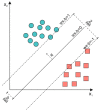Automatic Detection of Faults in Race Walking: A Comparative Analysis of Machine-Learning Algorithms Fed with Inertial Sensor Data
- PMID: 30934643
- PMCID: PMC6470680
- DOI: 10.3390/s19061461
Automatic Detection of Faults in Race Walking: A Comparative Analysis of Machine-Learning Algorithms Fed with Inertial Sensor Data
Abstract
The validity of results in race walking is often questioned due to subjective decisions in the detection of faults. This study aims to compare machine-learning algorithms fed with data gathered from inertial sensors placed on lower-limb segments to define the best-performing classifiers for the automatic detection of illegal steps. Eight race walkers were enrolled and linear accelerations and angular velocities related to pelvis, thighs, shanks, and feet were acquired by seven inertial sensors. The experimental protocol consisted of two repetitions of three laps of 250 m, one performed with regular race walking, one with loss-of-contact faults, and one with knee-bent faults. The performance of 108 classifiers was evaluated in terms of accuracy, recall, precision, F1-score, and goodness index. Generally, linear accelerations revealed themselves as more characteristic with respect to the angular velocities. Among classifiers, those based on the support vector machine (SVM) were the most accurate. In particular, the quadratic SVM fed with shank linear accelerations was the best-performing classifier, with an F1-score and a goodness index equal to 0.89 and 0.11, respectively. The results open the possibility of using a wearable device for automatic detection of faults in race walking competition.
Keywords: activity recognition; illegal steps; inertial sensors; machine-learning algorithms; race walking.
Conflict of interest statement
The authors declare no conflict of interests.
Figures








References
-
- International Association of Athletics Federations . Competition Rules. Imprimerie Multiprint; Municipality, Monaco: 2011. pp. 228–236.
-
- Westerfield G.A. The use of Biomechanics in the judging of race walking; Proceedings of the International Race Walk Forum; Shenzhen, China. 23 March 2007; pp. 1–14.
-
- Knicker A., Loch M. Race walking technique and judging-The final report of the International Athletic Foundation research project. N. Stud. Athl. 1990;5:3–25.
-
- Winter D.A. Biomechanics and Motor Control of Human Movement. 3rd ed. John Wiley & Sons Inc.; Hoboken, NJ, USA: 2005.
LinkOut - more resources
Full Text Sources

